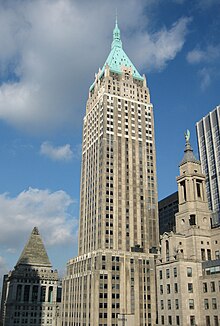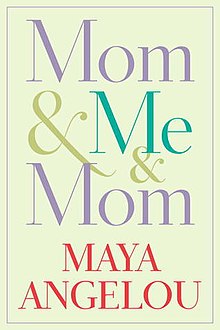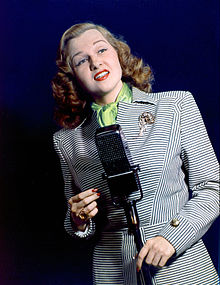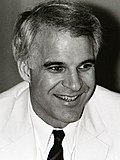Portal:The arts
T H E A R T S P O R T A L
The arts or creative arts are a wide range of human practices of creative expression, storytelling, and cultural participation. They encompass multiple diverse and plural modes of thinking, doing, and being, in an extremely broad range of media. Both dynamic and a characteristically constant feature of human life, they have developed into innovative, stylized, and sometimes intricate forms. This is often achieved through sustained and deliberate study, training, and/or theorizing within a particular tradition, across generations, and even between civilizations. The arts are a vehicle through which human beings cultivate distinct social, cultural, and individual identities while transmitting values, impressions, judgements, ideas, visions, spiritual meanings, patterns of life, and experiences across time and space.
Prominent examples of the arts include:
- visual arts (including architecture, ceramics, drawing, filmmaking, painting, photography, and sculpting)
- literary arts (including fiction, drama, poetry, and prose)
- performing arts (including dance, music, and theatre)
They can employ skill and imagination to produce objects and performances, convey insights and experiences, and construct new environments and spaces.
The arts can refer to common, popular, or everyday practices as well as more sophisticated, systematic, or institutionalized ones. They can be discrete and self-contained or combine and interweave with other art forms, such as the combination of artwork with the written word in comics. They can also develop or contribute to some particular aspect of a more complex art form, as in cinematography. By definition, the arts themselves are open to being continually redefined. The practice of modern art, for example, is a testament to the shifting boundaries, improvisation and experimentation, reflexive nature, and self-criticism or questioning that art and its conditions of production, reception, and possibility can undergo.
As both a means of developing capacities of attention and sensitivity and as ends in themselves, the arts can simultaneously be a form of response to the world and a way that our responses and what we deem worthwhile goals or pursuits are transformed. From prehistoric cave paintings to ancient and contemporary forms of ritual to modern-day films, art has served to register, embody, and preserve our ever-shifting relationships to each other and to the world. (Full article...)
Featured articles -
-
40 Wall Street (also the Trump Building; formerly the Bank of Manhattan Trust Building and Manhattan Company Building) is a 927-foot-tall (283 m) neo-Gothic skyscraper on Wall Street between Nassau and William streets in the Financial District of Manhattan in New York City, New York, U.S. Erected in 1929–1930 as the headquarters of the Manhattan Company, the building was designed by H. Craig Severance with Yasuo Matsui and Shreve & Lamb. The building is a New York City designated landmark and is listed on the National Register of Historic Places (NRHP); it is also a contributing property to the Wall Street Historic District, an NRHP district.
The building is on an L-shaped site. While the lower section has a facade of limestone, the upper stories incorporate a buff-colored brick facade and contain numerous setbacks. The facade also includes spandrels between the windows on each story, which are recessed behind the vertical piers on the facade. At the top of the building is a pyramid with a spire at its pinnacle. Inside, the lower floors contained the Manhattan Company's double-height banking room, a board room, a trading floor, and two basements with vaults. The remaining stories were rented to tenants; there were private clubs on several floors, as well as an observation deck on the 69th and 70th floors. (Full article...) -
Harvey Kurtzman's Jungle Book is a graphic novel by American cartoonist Harvey Kurtzman, published in 1959. Kurtzman aimed it at an adult audience, in contrast to his earlier work for adolescents in periodicals such as Mad. The social satire in the book's four stories targets Peter Gunn-style private-detective shows, Westerns such as Gunsmoke, capitalist avarice in the publishing industry, Freudian pop psychology, and lynch-hungry yokels in the South. Kurtzman's character Goodman Beaver makes his first appearance in one of the stories.
Kurtzman created the satirical Mad in 1952, but left its publisher EC Comics in 1956 after a dispute over financial control. After two failed attempts with similar publications, Kurtzman proposed Jungle Book as an all-original cartoon book to Ballantine Books to replace its successful series of Mad collections, which had moved to another publisher. Ballantine accepted Kurtzman's proposal, albeit with reservations about its commercial viability. It was the first mass-market paperback of original comics published in the United States. Though it was not a financial success, Jungle Book attracted fans and critics for its brushwork, satirical adult-oriented humor, experimental dialogue balloons, and adventurous page and panel designs. (Full article...) -
Manos Arriba (English: Hands Up) is an extended play (EP) by American singer Rosanna Tavarez released by her own record label Patacon Productions in March 2008. Tavarez adopted the stage name Chana while pursuing a music career in Latin alternative music and used it for the EP. Chana rose to prominence in 2001 as a member of the girl group Eden's Crush. Following their disbandment, she worked as a host on music television shows and decided to record Spanish-language music after meeting producer Marthin Chan. She had previously rejected working with Latin music producers because she did not want to pursue a career in conventional Latin pop.
A pop EP, Manos Arriba includes influences from other genres such as reggae, ska, power pop, and disco. The lyrics were based on Chana's past relationships and break-ups. She wrote and produced all five songs with Chan, and recorded them in Los Angeles, including at his personal recording studio, over roughly two years. Chana was inspired by studying Afro-Dominican dance and music. Music journalists believed the EP was not directly rooted in specifically Latin genres or topics and contrasted the style with her work with Eden's Crush. (Full article...) -
Mom & Me & Mom (2013) is the seventh and final book in author Maya Angelou's series of autobiographies. The book was published shortly before Mother's Day and Angelou's 85th birthday. It focuses, for the first time in her books, on Angelou's relationship with her mother, Vivian Baxter. The book explains Baxter's behavior, especially Baxter's abandonment of Angelou and Angelou's older brother when they were young children, and fills in "what are possibly the final blanks in Angelou's eventful life". The book also chronicles Angelou's reunion and reconciliation with Baxter.
Mom & Me & Mom is an overview of Angelou's life and revisits many of the same anecdotes she relates in her previous books. The first section, entitled "Mom & Me", centers on Angelou's early years, before the age of 17, and her transition from resentment and distrust of her mother to acceptance, support, and love towards her. After Baxter helps her through the birth of her son, Angelou goes from calling Baxter "Lady" to "Mom". In the book's second section, entitled "Me & Mom", Angelou chronicles the unconditional love, support, and assistance they gave to each other, as Baxter helps her through single motherhood, a failed marriage, and career ups and downs. As she had begun to do in I Know Why the Caged Bird Sings, and continued throughout her series, Angelou upheld the long traditions of African-American autobiography. At the same time she made a deliberate attempt to challenge the usual structure of the autobiography by critiquing, changing, and expanding the genre. She had become recognized and highly respected as a spokesperson for Blacks and women. Angelou was, as scholar Joanne Braxton has stated, "without a doubt, ... America's most visible black woman autobiographer". She had also become "a major autobiographical voice of the time". (Full article...) -

Singin' and Swingin' and Gettin' Merry like Christmas is the third book of Maya Angelou's seven-volume autobiography series. Set between 1949 and 1955, the book spans Angelou's early twenties. In this volume, Angelou describes her struggles to support her young son, form meaningful relationships, and forge a successful career in the entertainment world. The work's 1976 publication was the first time an African-American woman had expanded her life story into a third volume. Scholar Dolly McPherson calls the book "a graphic portrait of the adult self in bloom" and critic Lyman B. Hagen calls it "a journey of discovery and rebirth".[1]
In Singin' and Swingin, Angelou examines many of the same subjects and themes in her previous autobiographies including travel, music, race, conflict, and motherhood. Angelou depicts the conflict she felt as a single mother, despite her success as a performer as she travels Europe with the musical Porgy and Bess. Her depictions of her travels, which take up 40 percent of the book, have roots in the African-American slave narrative. Angelou uses music and musical concepts throughout Singin' and Swingin'; McPherson calls it Angelou's "praisesong" to Porgy and Bess. Angelou's stereotypes about race and race relations are challenged as she interacts more with people of different races. During the course of this narrative, she changes her name from Marguerite Johnson to Maya Angelou for professional reasons. Her young son changes his name as well, from Clyde to Guy, and their relationship is strengthened as the book ends. (Full article...) -
The Pale Emperor is the ninth studio album by American rock band Marilyn Manson. It was released on January 15, 2015, through lead singer Marilyn Manson's Hell, etc. label, and distributed in the United States by Loma Vista Recordings and internationally by Cooking Vinyl. The album was issued in standard and deluxe editions on CD and double LP vinyl, and as a limited edition box set. The standard version of the album contains ten tracks; the deluxe edition includes three acoustic versions as bonus tracks.
Produced by Manson and newcomer Tyler Bates, who Manson met through their mutual involvement in the TV series Californication, The Pale Emperor eschews the band's usual industrial rock style in favor of a sparser, blues rock-influenced sound. The album features drummer Gil Sharone, formerly of Stolen Babies and The Dillinger Escape Plan. It was the first album since his return to the band in 2008 to not include songwriting or performance contributions from bassist Twiggy Ramirez, who was busy with his own projects. The album is dedicated to Manson's mother, who died of Alzheimer's disease during production. (Full article...) -
Jo Elizabeth Stafford (November 12, 1917 – July 16, 2008) was an American traditional pop singer, whose career spanned five decades from the late 1930s to the early 1980s. Admired for the purity of her voice, she originally underwent classical training to become an opera singer before following a career in popular music, and by 1955 had achieved more worldwide record sales than any other female artist. Her 1952 song "You Belong to Me" topped the charts in the United States and United Kingdom, becoming the second single to top the UK Singles Chart, and the first by a female artist to do so.
Born in remote oil-rich Coalinga, California, near Fresno in the San Joaquin Valley, Stafford made her first musical appearance at age 12. While still at high school, she joined her two older sisters to form a vocal trio named the Stafford Sisters, who found moderate success on radio and in film. In 1938, while the sisters were part of the cast of Twentieth Century Fox's production of Alexander's Ragtime Band, Stafford met the future members of the Pied Pipers and became the group's lead singer. Bandleader Tommy Dorsey hired them in 1939 to perform vocals with his orchestra. From 1940 to 1942, the group often performed with Dorsey's new male singer, Frank Sinatra. (Full article...) -
The Round Church (Bulgarian: Кръгла църква, Kragla tsarkva), also known as the Golden Church (Златна църква, Zlatna tsarkva) or the Church of St John (църква "Свети Йоан", tsarkva "Sveti Yoan"), is a large partially preserved early medieval Eastern Orthodox church. It lies in Preslav, the former capital of the First Bulgarian Empire, today a town in northeastern Bulgaria. The church dates to the early 10th century, the time of Tsar Simeon I's rule, and was unearthed and first archaeologically examined in 1927–1928.
Considered to be one of the most impressive examples of medieval Bulgarian architecture, the Round Church takes its name from the distinctive shape of one of its three sections, the cella (naos), which is a rotunda that serves as a place of liturgy. The church's design also includes a wide atrium and a rectangular entrance area, or narthex, marked by two circular turrets. (Full article...) -
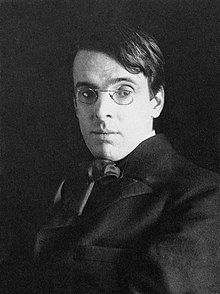
Yeats photographed in 1903 by Alice Boughton
William Butler Yeats (13 June 1865 – 28 January 1939) was an Irish poet, dramatist and writer, and one of the foremost figures of 20th-century literature. He was a driving force behind the Irish Literary Revival, and along with Lady Gregory founded the Abbey Theatre, serving as its chief during its early years. He was awarded the 1923 Nobel Prize in Literature, and later served two terms as a Senator of the Irish Free State.
A Protestant of Anglo-Irish descent, Yeats was born in Sandymount, Ireland. His father practised law and was a successful portrait painter. He was educated in Dublin and London and spent his childhood holidays in County Sligo. He studied poetry from an early age, when he became fascinated by Irish legends and the occult. While in London he became part of the Irish literary revival. His early poetry was influenced by John Keats, William Wordsworth, William Blake and many more. These topics feature in the first phase of his work, lasting roughly from his student days at the Metropolitan School of Art in Dublin until the turn of the century. His earliest volume of verse was published in 1889, and its slow-paced and lyrical poems display debts to Edmund Spenser, Percy Bysshe Shelley and the poets of the Pre-Raphaelite Brotherhood. (Full article...) -

Gustav Holst, c. 1921 photograph by Herbert Lambert
Gustav Theodore Holst (born Gustavus Theodore von Holst; 21 September 1874 – 25 May 1934) was an English composer, arranger and teacher. Best known for his orchestral suite The Planets, he composed many other works across a range of genres, although none achieved comparable success. His distinctive compositional style was the product of many influences, Richard Wagner and Richard Strauss being most crucial early in his development. The subsequent inspiration of the English folksong revival of the early 20th century, and the example of such rising modern composers as Maurice Ravel, led Holst to develop and refine an individual style.
There were professional musicians in the previous three generations of Holst's family and it was clear from his early years that he would follow the same calling. He hoped to become a pianist, but was prevented by neuritis in his right arm. Despite his father's reservations, he pursued a career as a composer, studying at the Royal College of Music under Charles Villiers Stanford. Unable to support himself by his compositions, he played the trombone professionally and later became a teacher—a great one, according to his colleague Ralph Vaughan Williams. Among other teaching activities he built up a strong tradition of performance at Morley College, where he served as musical director from 1907 until 1924, and pioneered music education for women at St Paul's Girls' School, where he taught from 1905 until his death in 1934. He was the founder of a series of Whitsun music festivals, which ran from 1916 for the remainder of his life. (Full article...) -
The Penelopiad is a novella by Canadian author Margaret Atwood. It was published in 2005 as part of the first set of books in the Canongate Myth Series where contemporary authors rewrite ancient myths. In The Penelopiad, Penelope reminisces on the events of the Odyssey, life in Hades, Odysseus, Helen of Troy, and her relationships with her parents. A Greek chorus of the twelve maids, who Odysseus believed were disloyal and whom Telemachus hanged, interrupt Penelope's narrative to express their view on events. The maids' interludes use a new genre each time, including a jump-rope rhyme, a lament, an idyll, a ballad, a lecture, a court trial and several types of songs.
The novella's central themes include the effects of story-telling perspectives, double standards between the sexes and the classes, and the fairness of justice. Atwood had previously used characters and storylines from Greek mythology in fiction such as her novel The Robber Bride, short story The Elysium Lifestyle Mansions, and poems "Circe: Mud Poems" and "Helen of Troy Does Countertop Dancing." She used Robert Graves' The Greek Myths and E. V. Rieu and D. C. H. Rieu's version of the Odyssey to prepare for this novella. (Full article...) -
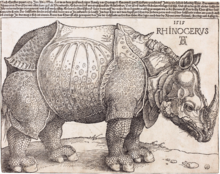
Dürer's Rhinoceros is the name commonly given to a woodcut executed by German artist Albrecht Dürer in 1515. Dürer never saw the actual rhinoceros, which was the first living example seen in Europe since Roman times. Instead the image is based on an anonymous written description and brief sketch of an Indian rhinoceros brought to Lisbon in 1515. Later that year, the King of Portugal, Manuel I, sent the animal as a gift for Pope Leo X, but it died in a shipwreck off the coast of Italy. Another live rhinoceros was not seen again in Europe until Abada arrived from India to the court of Sebastian of Portugal in 1577.
Dürer's woodcut is not an accurate representation. It depicts an animal with hard plates that cover its body like sheets of armor, with a gorget at the throat, a solid-looking breastplate, and what appear to be rivets along the seams; there is a small twisted horn on its back, scaly legs and saw-like rear quarters. None of these features are present in a real rhinoceros, although the Indian rhinoceros does have deep folds in its skin that can look like armor from a distance. (Full article...) -
"all things" is the seventeenth episode of the seventh season of the American science fiction television series The X-Files. Written and directed by lead actress Gillian Anderson, it first aired on April 9, 2000, on the Fox network. The episode is unconnected to the wider mythology of The X-Files and functions as a "Monster-of-the-Week" story. Watched by 12.18 million people, the initial broadcast had a Nielsen household rating of 7.1. The episode received mixed reviews from critics; many called the dialogue pretentious and criticized the characterization of Scully. However, viewer response was generally positive.
The series centers on Federal Bureau of Investigation (FBI) special agents Fox Mulder (David Duchovny) and Dana Scully (Anderson) who work on cases linked to the paranormal, called "X-Files". Mulder is a believer in the paranormal. The skeptical Scully was initially assigned to debunk his work, but the two have developed a deep friendship. In this episode, a series of coincidences lead Scully to meet Dr. Daniel Waterston (Nicolas Surovy), a married man with whom she had an affair while at medical school. After Waterston slips into a coma, Scully puts aside her skepticism and seeks out alternative medicine to save Waterston. (Full article...) -
The Bat is a three-act play by Mary Roberts Rinehart and Avery Hopwood that was first produced by Lincoln Wagenhals and Collin Kemper in 1920. The story combines elements of mystery and comedy as Cornelia Van Gorder and guests spend a stormy night at her rented summer home, searching for stolen money they believe is hidden in the house, while they are stalked by a masked criminal known as "the Bat". The Bat's identity is revealed at the end of the final act.
The play originated as an adaptation of Rinehart's 1908 mystery novel The Circular Staircase. Rinehart and Hopwood altered the story to prepare it for Broadway, including adding the titular antagonist. The connection to the novel led to a legal dispute over film rights with the Selig Polyscope Company, producers of a 1915 film adaptation of the novel, also titled The Circular Staircase. After previewing under the title A Thief in the Night, the play opened as The Bat at the Morosco Theatre on Broadway on August 23, 1920. (Full article...) -
The Great Western Railway War Memorial is a First World War memorial by Charles Sargeant Jagger and Thomas S. Tait. It stands on platform 1 at London Paddington station, commemorating the 2,500 employees of the Great Western Railway (GWR) who were killed in the conflict. One-third of the GWR's workforce of almost 80,000 left to fight in the First World War, the company guaranteeing their jobs, and the GWR gave over its workshops for munitions manufacturing as well as devoting its network to transporting soldiers and military equipment. The company considered several schemes for a war memorial before approaching Jagger to design a statue. Some officials continued to push for an alternate design, to the point that Jagger threatened to resign. Jagger was working on several other war memorial commissions at the same time as the GWR's, including his most famous, the Royal Artillery Memorial.
The memorial consists of a bronze statue of a soldier, dressed in heavy winter clothing, reading a letter from home. The statue stands on platform 1 of Paddington station, on a polished granite plinth within a white stone surround. The names of the dead were recorded on a roll that was buried underneath the plinth. Viscount Churchill, the company chairman, unveiled the memorial on 11 November 1922, in front of the Archbishop of Canterbury, GWR officials, and more than 6,000 relatives of the dead. Such was the expected size of the crowd that the GWR built viewing stands across two platforms and the tracks in between them. (Full article...)
Featured picture

Did you know...
- ... that the Portland Armory (pictured) in Portland, Oregon was the first building on the National Register of Historic Places to achieve a Platinum Leadership in Energy and Environmental Design certification?
- ... that the New Jersey Library Association, the oldest library organization in New Jersey, began in 1890 with 39 members and currently has over 1,600?
- ... that British TV presenter Dermot O'Leary once played as a punt returner for the Colchester Gladiators?
In this month
- 5 May 1726 – Handel's opera Alessandro premieres at the King's Theatre in London with Italian castrato singer Senesino in the title role
- 12 May 1926 – Dmitri Shostakovich's Symphony No. 1, which he composed at the age of 19 while a student at Leningrad Conservatory, receives its first performance
- 22 May 1844 – Impressionst painter and printmaker Mary Cassatt (self-portrait pictured) is born in Allegheny, Pennsylvania
- 26 May 1897 – Bram Stoker's novel Dracula, which later became the subject of numerous theatrical, film and television interpretations, is published by Constable & Co.
- 29 May 1913 – Igor Stravinsky's ballet The Rite of Spring premieres in Paris and causes a riot in the audience between supporters and opponents of the work
News
- August 5: DaBaby Levitating remix losing US radio audiences after the rapper's comments on HIV/AIDS
- June 11: Taylor Swift's Evermore records biggest sales week of the year as it returns to No 1 on album chart
- May 27: Olivia Rodrigo's song good 4 u debuts at No 1 on US Billboard Hot 100 chart
- May 25: 'Rock and roll never dies': Italy wins Eurovision after 30 years
- February 10: Disney to shut down Blue Sky Studios, animation studio behind 'Ice Age'
Featured biography
William Bruce was a Scottish gentleman-architect, "the effective founder of classical architecture in Scotland", as Howard Colvin observes. A key figure in introducing the Palladian style into Scotland, he has been compared to the pioneering English architects Inigo Jones and Christopher Wren, and to the contemporaneous English introducers of French style in domestic architecture Hugh May and Roger Pratt. Bruce played a role in the Restoration of Charles II, carrying messages between the exiled king and General Monck, and was rewarded with lucrative official appointments, including that of Surveyor General of the King's Works in Scotland, effectively the "king's architect". His patrons included the Duke of Lauderdale, the most powerful man in Scotland at the time. Despite his lack of technical expertise, he worked with competent masons and professional builders, to whom he imparted a classical vocabulary; thus his influence was carried far beyond his own aristocratic circle. Beginning in the 1660s he built and remodelled a number of country houses, including Thirlestane Castle for the Duke of Lauderdale, and Hopetoun House. Among his most significant work was his own Palladian mansion at Kinross, built on the Loch Leven estate which he had purchased in 1675. (Full article...)
Featured audio
Selected quote
Categories
WikiProjects
Parent project
Descendant projects
Related portals
Things you can do
- Check the recent changes page for improvements, other changes, and vandalism to these articles
- Article requests: Requests articles (arts and entertainment)
- Deletion discussions: Listed at Wikipedia:WikiProject Deletion sorting/Arts
- Expand: check Visual arts stubs to expand
- Notability: Articles with notability concerns, listed at WikiProject Notability
- Requested pictures: Arts topics, requested pictures
- ^ Hagen 1997, p. 95.



